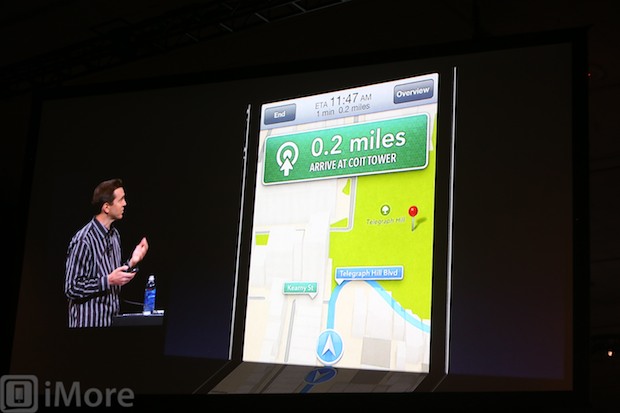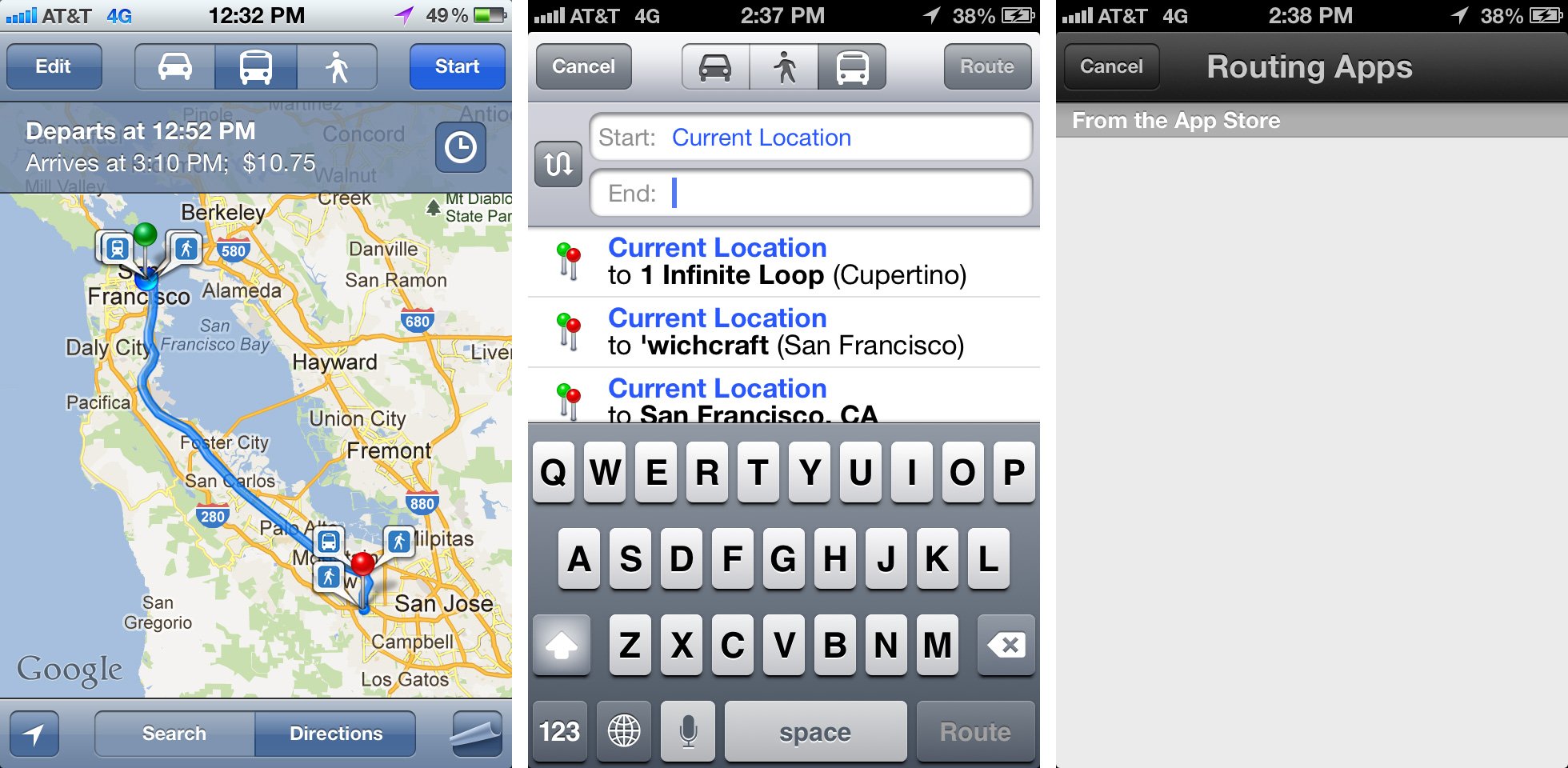Regarding iOS 6 Maps and Apple handing off transit directions to apps

Before Apple unveiled the new iOS 6 Maps app at WWDC 2012, I wrote a post trying to help offset the hype and hopefully better set expectations. It seemed unlikely Apple could simply swap out Google maps data, add new features, and still keep all the original ones intact.
That's proven to be true. TomTom has replaced Google as Apple's primary map provider, but that means Google's Street View is gone. They've added free turn-by-turn navigation and put it in Street View's place, perhaps to distract people who might otherwise be frustrated by the omission.
But what about directions? That's been the source of some initial confusion, and a lot of debate. Driving and walking directions are still there, if less obviously placed behind a 90 degree turn button. Tap either tabs and you get exactly what you'd expect. Hit the public transit tab, however, and you get a list of apps that can supply that information.
No, I didn't type that incorrectly. In the iOS 6 beta there's no built-in transit directions.
Apple's view, elaborated on by SVP of iOS, Scott Forstall during the Keynote, is that developers have done such a tremendous job with public transit directions that Apple would rather hand off to them and not reinvent the data wheel.
That's great for developers but the opposite of great for users.
It's great for developers because Maps-compatible apps can be sold right from within the Apple Maps app (similar to how games can be sold right from within Game Center. That means more timely exposure for the developers -- users see the app when they need it and are more likely to buy it.
Master your iPhone in minutes
iMore offers spot-on advice and guidance from our team of experts, with decades of Apple device experience to lean on. Learn more with iMore!
It's not so great for users because, instead of being presented with the timely data they need, they're presented with choices to make and steps to follow to eventually get to the data they need.
In an ideal iOS 6 Maps implementation, Apple would do what they usually do -- provide baseline functionality and let developers handle more advanced, more detailed, more niche requirements. iOS 6 Maps would include the same basic transit information as iOS 5 Maps did, and then offer additional content via the in-Maps App Store.
Apple usually places the needs of users ahead of the needs of developers, so this may simply be a case of Apple not being able to provide good enough transit data for numerous enough locations, forcing the absolute hand-off to apps. They could also still be working on it and have it ready for a future beta or in the Gold Master.
Otherwise the abdication of responsibility in an app as important as Maps is tough to understand, and is something Apple should consider re-visiting during the beta cycle, or in a future point revision like iOS 6.1.
Otherwise, if Google does indeed release a proper, Android-style Google Maps app in the App Store, it could prove to be a powerful alternative for those who want and need transit (and Street View) built-in.
Update: We received some screenshots highlighting the difference.


Rene Ritchie is one of the most respected Apple analysts in the business, reaching a combined audience of over 40 million readers a month. His YouTube channel, Vector, has over 90 thousand subscribers and 14 million views and his podcasts, including Debug, have been downloaded over 20 million times. He also regularly co-hosts MacBreak Weekly for the TWiT network and co-hosted CES Live! and Talk Mobile. Based in Montreal, Rene is a former director of product marketing, web developer, and graphic designer. He's authored several books and appeared on numerous television and radio segments to discuss Apple and the technology industry. When not working, he likes to cook, grapple, and spend time with his friends and family.
